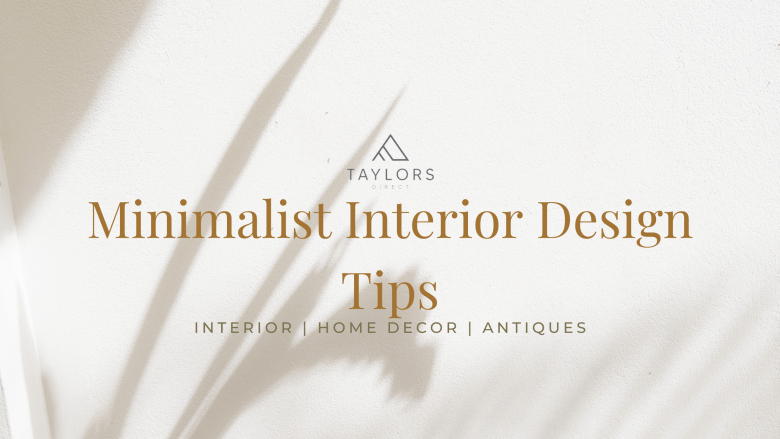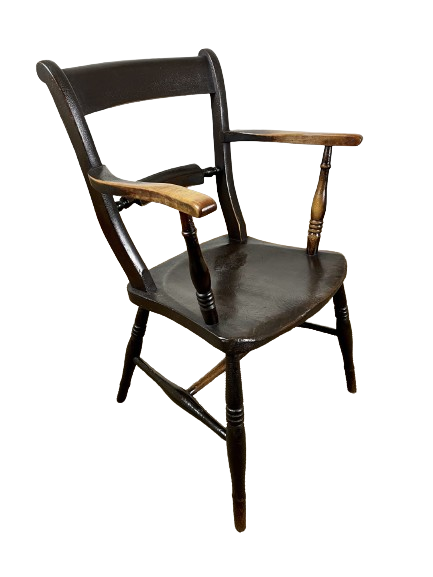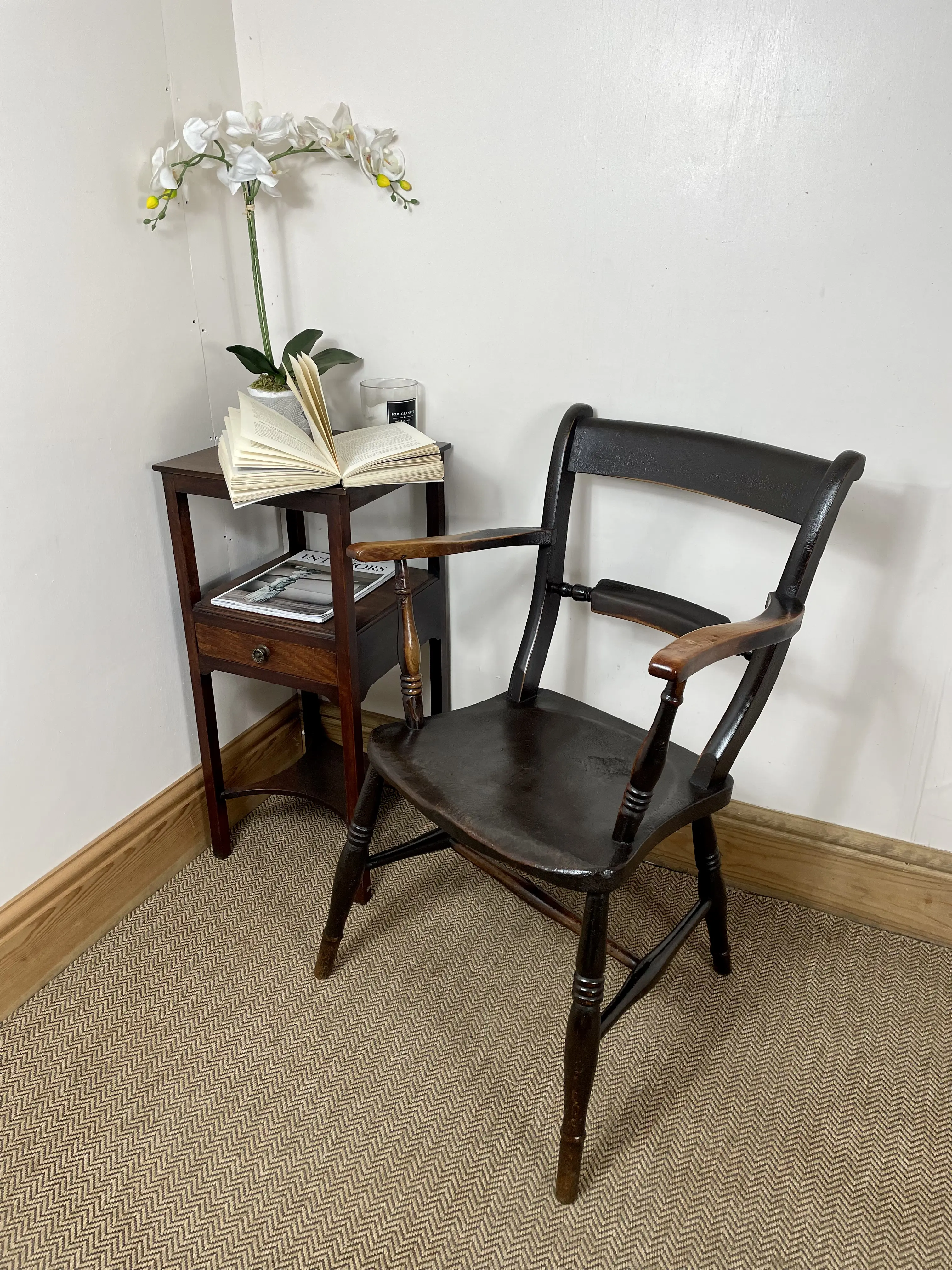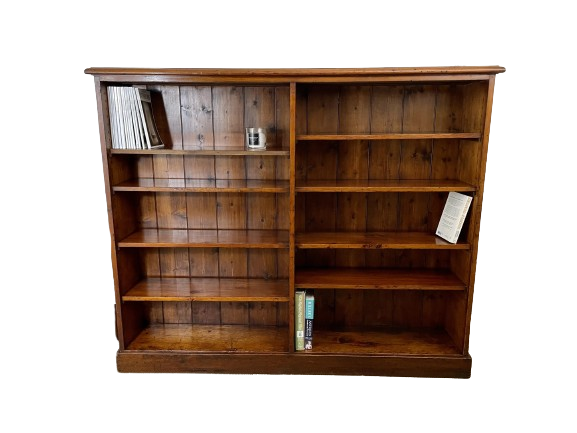
18th Century Antique Oxford Arm Chair
£165.0019th Century Victorian Oak Dining Table
£1,250.0019th Century Antique Full Length Cheval Mirror
17th Century Antique Oak Coffer
£595.0019th Century Large Antique Bookcase
£950.0019th Century Full Length Cheval Mirror
19th Century Antique Bow Front Chest of Drawers
£850.0019th Century Antique Pine Cupboard
£950.0017th Century Oak Refectory Dining Table
19C Antique Victorian Kitchen Shelves
£450.0019C Antique Oak Folding Childs Chair
£160.0019C Antique Victorian Hall Chair
£210.00Introduction
Are you tired of coming home to a cluttered and chaotic space? Do you yearn for a calm and serene atmosphere in your home? Look no further than minimalist interior design. This design style focuses on simplicity, clean lines, and a lack of clutter, resulting in a space that feels open, airy, and tranquil. In this article, we’ll explore the key principles of minimalist interior design and offer tips for creating a minimalist space in your own home. So, whether you’re a seasoned minimalist or just starting to explore this design style, read on to discover how minimalist interior design can transform your living space.
18th Century Antique Oxford Arm Chair
£165.0019th Century Victorian Oak Dining Table
£1,250.0019th Century Antique Full Length Cheval Mirror
17th Century Antique Oak Coffer
£595.0019th Century Large Antique Bookcase
£950.0019th Century Full Length Cheval Mirror
19th Century Antique Bow Front Chest of Drawers
£850.0019th Century Antique Pine Cupboard
£950.0017th Century Oak Refectory Dining Table
19C Antique Victorian Kitchen Shelves
£450.0019C Antique Oak Folding Childs Chair
£160.0019C Antique Victorian Hall Chair
£210.00Embrace a Neutral Colour Palette
When it comes to creating a minimalist interior design, the colour palette is key. Embracing a neutral colour palette can help create a sense of calm and tranquility in your space. Here are some tips for using neutral colours in your minimalist interior design:
- Use shades of white, beige, and grey for your walls, floors, and larger furniture pieces
- Add interest with different textures, such as a white shag rug or a grey linen sofa
- Consider using a monochromatic colour scheme, using varying shades of the same colour
- Incorporate natural materials, such as wood or stone, to add warmth and texture to your space
- Use accents of black or other darker shades sparingly, to create contrast and visual interest
- By embracing a neutral colour palette, you can create a minimalist interior design that feels light, open, and uncluttered.
18th Century Antique Oxford Arm Chair
£165.0019th Century Victorian Oak Dining Table
£1,250.0019th Century Antique Full Length Cheval Mirror
17th Century Antique Oak Coffer
£595.0019th Century Large Antique Bookcase
£950.0019th Century Full Length Cheval Mirror
19th Century Antique Bow Front Chest of Drawers
£850.0019th Century Antique Pine Cupboard
£950.0017th Century Oak Refectory Dining Table
19C Antique Victorian Kitchen Shelves
£450.0019C Antique Oak Folding Childs Chair
£160.0019C Antique Victorian Hall Chair
£210.00Choose Simple and Clean-lined Furniture
Furniture plays a crucial role in minimalist interior design. The right pieces can help create a clean, uncluttered, and serene space. Here are some tips for choosing simple and clean-lined furniture for your minimalist interior design:
- Choose furniture with clean lines and simple shapes, such as a streamlined sofa or a minimalist dining table
- Opt for furniture with minimal ornamentation or detailing, as this can detract from the minimalist aesthetic
- Consider furniture made of natural materials such as wood or leather, as these materials can add warmth and texture to your space
- Avoid furniture that is overly bulky or heavy, as this can make your space feel cramped
- Look for furniture with hidden storage options, such as a coffee table with drawers or a bed with built-in storage, to help minimise clutter
When choosing furniture for your minimalist interior design, less is definitely more. Keep your furniture selections simple, streamlined, and functional, and your space will feel calm, serene, and uncluttered.
18th Century Antique Oxford Arm Chair
£165.0019th Century Victorian Oak Dining Table
£1,250.0019th Century Antique Full Length Cheval Mirror
17th Century Antique Oak Coffer
£595.0019th Century Large Antique Bookcase
£950.0019th Century Full Length Cheval Mirror
19th Century Antique Bow Front Chest of Drawers
£850.0019th Century Antique Pine Cupboard
£950.0017th Century Oak Refectory Dining Table
19C Antique Victorian Kitchen Shelves
£450.0019C Antique Oak Folding Childs Chair
£160.0019C Antique Victorian Hall Chair
£210.00De-clutter and Simplify Your Space
In minimalist interior design, the principle of “less is more” is especially important when it comes to clutter. Clutter can detract from the simple and calming aesthetic of a minimalist space. Here are some tips for de-cluttering and simplifying your space:
- Start with a clean slate: Begin by completely clearing out the space you want to declutter. This will give you a fresh perspective and help you see the space with new eyes.
- Get rid of what you don’t need or love: Take a hard look at the items in your space and ask yourself if you really need or love them. If not, donate or discard them.
- Use the “one in, one out” rule: For every new item you bring into your home, get rid of an old one. This will help you maintain a clutter-free space over time.
- Organise what you keep: Once you’ve de-cluttered, it’s time to organise what you’ve kept. Use storage baskets or boxes to keep items out of sight but still accessible. Label the containers to make it easy to find what you need.
- Create a designated space for everything: Assign a specific spot for each item you keep. This will help you avoid clutter buildup and make it easier to find what you need.
- Make use of hidden storage: Consider furniture pieces with hidden storage options, such as a bed with built-in drawers or a coffee table with a lift-top for storing items.
- Minimise visual clutter: In addition to physical clutter, visual clutter can also be overwhelming. Minimise visual clutter by choosing simple and clean-lined furniture and decor.
By de-cluttering and simplifying your space, you can create a minimalist interior design that feels open, uncluttered, and serene. Remember, it’s a process, so take it one step at a time and enjoy the benefits of a more streamlined and calming living space.
18th Century Antique Oxford Arm Chair
£165.0019th Century Victorian Oak Dining Table
£1,250.0019th Century Antique Full Length Cheval Mirror
17th Century Antique Oak Coffer
£595.0019th Century Large Antique Bookcase
£950.0019th Century Full Length Cheval Mirror
19th Century Antique Bow Front Chest of Drawers
£850.0019th Century Antique Pine Cupboard
£950.0017th Century Oak Refectory Dining Table
19C Antique Victorian Kitchen Shelves
£450.0019C Antique Oak Folding Childs Chair
£160.0019C Antique Victorian Hall Chair
£210.00Incorporate Natural Elements
In a minimalist interior design, incorporating natural elements can help create a serene and calming atmosphere. Here are some tips for incorporating natural elements into your space:
- Use wood: Incorporating wood into your space can add warmth and texture. Consider using a wood coffee table, wood shelves, or a wood accent wall.
- Add stone: Stone is another natural material that can add visual interest to your space. Consider using a stone backsplash in your kitchen or bathroom, a stone fireplace surround, or a stone accent wall.
- Introduce plants: Plants are a great way to bring the outdoors in and add a touch of greenery to your space. Consider using a tall potted plant in a corner or a collection of small plants on a windowsill.
- Incorporate natural fibres: Natural fibres such as jute, sisal, or hemp can add texture to your space. Consider using a jute rug or a sisal basket for storage.
- Use natural colours: When incorporating natural elements into your space, consider using colours found in nature, such as greens, browns, and blues. These colours can help create a calming and serene atmosphere.
- Choose furniture made from natural materials: When selecting furniture for your space, consider pieces made from natural materials such as wood or leather. These materials can add warmth and texture to your space.
By incorporating natural elements into your minimalist interior design, you can create a space that feels calm, serene, and connected to the natural world. Whether it’s using wood or stone, introducing plants, or using natural fibers and colours, there are many ways to bring the beauty of nature into your home. Experiment with different natural elements to find what works best for your space and personal style.
18th Century Antique Oxford Arm Chair
£165.0019th Century Victorian Oak Dining Table
£1,250.0019th Century Antique Full Length Cheval Mirror
17th Century Antique Oak Coffer
£595.0019th Century Large Antique Bookcase
£950.0019th Century Full Length Cheval Mirror
19th Century Antique Bow Front Chest of Drawers
£850.0019th Century Antique Pine Cupboard
£950.0017th Century Oak Refectory Dining Table
19C Antique Victorian Kitchen Shelves
£450.0019C Antique Oak Folding Childs Chair
£160.0019C Antique Victorian Hall Chair
£210.00Use Lighting to Create a Calm Atmosphere
Lighting is an important element in creating a calm and serene atmosphere in a minimalist interior design. Here are some tips for using lighting to create a peaceful and inviting space:
- Highlight key areas: Use lighting to highlight key areas of your space, such as a piece of artwork or a favourite decor item. This can help create a focal point and add interest to your space.
- Create a sense of depth: Use lighting to create a sense of depth in your space. Consider using a combination of overhead lighting and floor lamps to create layers of light and shadow.
- Use diffused lighting: Soft, diffused lighting can create a warm and inviting atmosphere in your space. Consider using lampshades or diffusers to soften the light and create a more relaxing environment.
- Consider natural light: Natural light is an important element in creating a calming atmosphere in your home. Consider using sheer curtains or blinds to let in natural light while maintaining privacy.
- Use dimmer switches: Dimmer switches can help you control the intensity of the lighting in your space. This can be especially useful in creating a more relaxing atmosphere in the evenings.
- Avoid harsh lighting: Harsh lighting can create a harsh and unwelcoming atmosphere in your space. Avoid overhead lighting that is too bright or direct, and instead opt for softer lighting options.
By using lighting effectively in your minimalist interior design, you can create a calm and inviting atmosphere in your home. From highlighting key areas to using soft and diffused lighting, there are many ways to use lighting to enhance your space. Experiment with different lighting options to find what works best for your space and personal style.
18th Century Antique Oxford Arm Chair
£165.0019th Century Victorian Oak Dining Table
£1,250.0019th Century Antique Full Length Cheval Mirror
17th Century Antique Oak Coffer
£595.0019th Century Large Antique Bookcase
£950.0019th Century Full Length Cheval Mirror
19th Century Antique Bow Front Chest of Drawers
£850.0019th Century Antique Pine Cupboard
£950.0017th Century Oak Refectory Dining Table
19C Antique Victorian Kitchen Shelves
£450.0019C Antique Oak Folding Childs Chair
£160.0019C Antique Victorian Hall Chair
£210.00Conclusion
IIn a world filled with chaos and clutter, minimalist interior design offers a calming and serene respite. By following the principles of minimalism, you can create a space that feels open, uncluttered, and tranquil. Here are some key takeaways from this article:
- Embrace a neutral colour palette: Using neutral colours such as white, beige, and grey can help create a sense of calm and tranquility in your space.
- Choose simple and clean-lined furniture: Avoid bulky or overly ornate furniture and opt for pieces that are clean-lined and functional.
- De-clutter and simplify your space: Get rid of items you don’t need or love, and organise what you keep in a functional and visually pleasing way.
- Incorporate natural elements: Adding natural materials such as wood, stone, or plants can create a connection to the natural world and add visual interest to your space.
- Use lighting to create a calm atmosphere: Soft, diffused lighting can create a warm and inviting atmosphere in your space.
By incorporating these tips into your own space, you can create a minimalist interior design that reflects your personal style and creates a sense of calm in your daily life. Remember, minimalism is a process and takes time to achieve. Be patient, and enjoy the journey of creating a more peaceful and serene living space.
In addition to the tips discussed in this article, here are some additional considerations for creating a successful minimalist interior design:
- Consider negative space: Negative space refers to the empty spaces in your room that are intentionally left blank. These spaces can help create a feeling of openness and tranquility in your space.
- Use geometric shapes: Clean-lined and geometric shapes are a key component of minimalist interior design. Incorporating shapes such as squares, rectangles, and circles can add visual interest to your space.
- Create a focal point: In a minimalist interior design, it’s important to create a focal point to draw the eye and add interest to your space. Consider using a piece of artwork, a bold accent wall, or a statement light fixture.
- Choose quality over quantity: When selecting items for your minimalist interior design, choose quality pieces that will stand the test of time. Remember, less is more.
In conclusion, creating a minimalist interior design is about more than just decluttering and simplifying your space. It’s about embracing a philosophy that values simplicity, functionality, and calm. By incorporating the tips discussed in this article, as well as considering additional factors such as negative space and quality over quantity, you can create a space that feels open, airy, and serene. So, take a deep breath, let go of the clutter, and embrace the beauty of minimalist interior design in your own home.





































